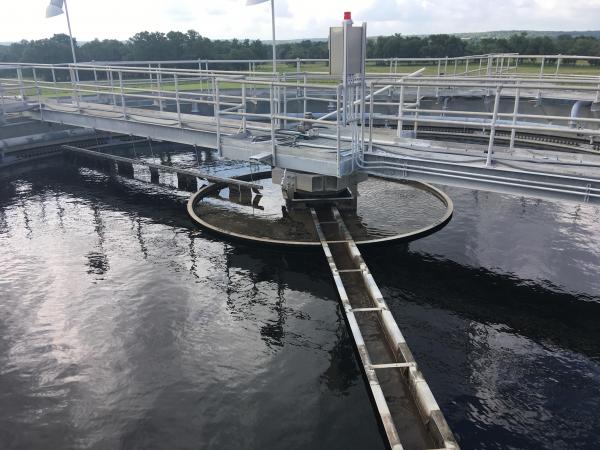City discharge permit approved at 822,500 gallons
The Texas Commission on Environmental Quality (TCEQ) Commission issued a discharge permit to the City of Dripping Springs Wastewater facility, with an allowable maximum of 822,500 gallons per day, on Feb. 27.
In a press release, the city said the new permit allowed “the City to begin the much-needed expansion of its wastewater treatment plant,” and that “The City may now move forward with its plans to continue providing for its citizens and to accommodate the rapid residential and commercial growth in the area.”
The City has been working on its wastewater expansion plan for more than seven years, and the new number of 822,500 gallons, is a reduction from the original request by the City for a 995,000 gpd permit.
The reduced gallons per day number is the result of a settlement the City had reached with various opposition groups last July. The opposition groups had expressed concern about the effects of treated discharge into Onion Creek and area water wells. Concerns ranged from algae bloom in Onion Creek, to pharmaceutical leakage into water tables.
“This is a historic day for the City of Dripping Springs and our community. We have been at this for more than seven years, but it has all been worth it,” Mayor Pro Tem Bill Foulds said. “Our responsibility is to care for our citizens and protect our natural resources while planning for the growth that we know is coming. We could have stayed with traditional treatment options and avoided making tough decisions; that is not what our city is about. We knew this process would be challenging and would cause legitimate concerns among some stakeholders. But, we’ve worked hard with everyone, and I think the outcome demonstrates that we did our homework and have been willing to compromise along the way.”
Deputy City Administrator Ginger Faught also added comment. “I am so incredibly proud of this City Council, for having the vision and thick skin to move forward with this process. It was not the most popular decision to request a discharge permit,” Faught said. “But, our Council left no stone unturned and vetted our options in every way possible, from environmental and financial to community impact and long-term sustainability. I truly believe what we are doing here in Dripping Springs will serve as a model for municipalities throughout the state.”
The City’s press release stated, “Dripping Springs remains focused on reuse and has signed contracts with various developments in the area to accept essentially all of the treated effluent that will be produced by the city’s wastewater facility. In January the City Council approved a Reuse Agreement with a golf course development in Driftwood that has brought the City’s commitment for reuse in excess of the new agreed-upon allowable maximum of 822,500 gallons per day. For context, the City now produces approximately 130,000 gallons per day; it is anticipated that the proposed expansion will accommodate the City for the next decade. With today’s permit from the TCEQ, the City now has plans to move into the design and construction phases of the plant expansion, which could take up to two years.”
Protect Our Water (POW), one of the groups originally opposed to the discharge permit, submitted the following written comment to the Century News on TCEQ’s permit issuance: "Protect Our Water (POW) opposed the City’s Discharge Permit because of concerns that any discharge or plant failure could potentially contaminate our community’s drinking water. We saw the potential for harm with the science-based dye/trace study which was done in December of 2017, which confirmed that Onion Creek recharges our aquifer. POW ultimately decided to settle with the City because we were able to agree with City leaders on some major, material provisions that offer protections for Onion Creek and our Aquifer - and the Settlement further affirmed the City's tangible plans to irrigate vs. discharge. We encourage the community to stay involved in this issue, by attending the newly formed Utility Commission meetings once those get started, and help us to monitor water and wastewater operations and planning as we continue to protect our community and protect our water." - Richard Beggs, Board Member, Protect Our Water.
The intent to form a Utility Commission was announced by the City on Jan. 7. The commission will be tasked with assisting the City in its Wastewater Plant operations, reuse plans, and expansion; assist the City in achieving its goal of 100% beneficial reuse; and assisting the City with procedures and policies related to retail water services provided by the City. For more information on the utility commission, visit cityofdrippingsprings.com.



